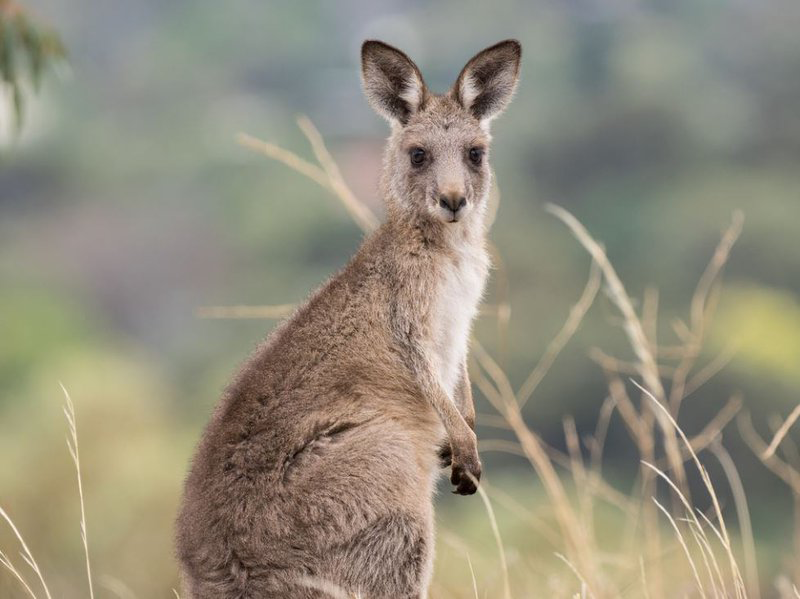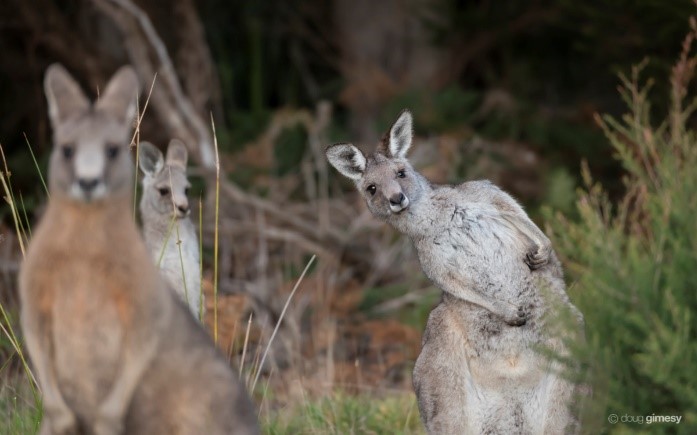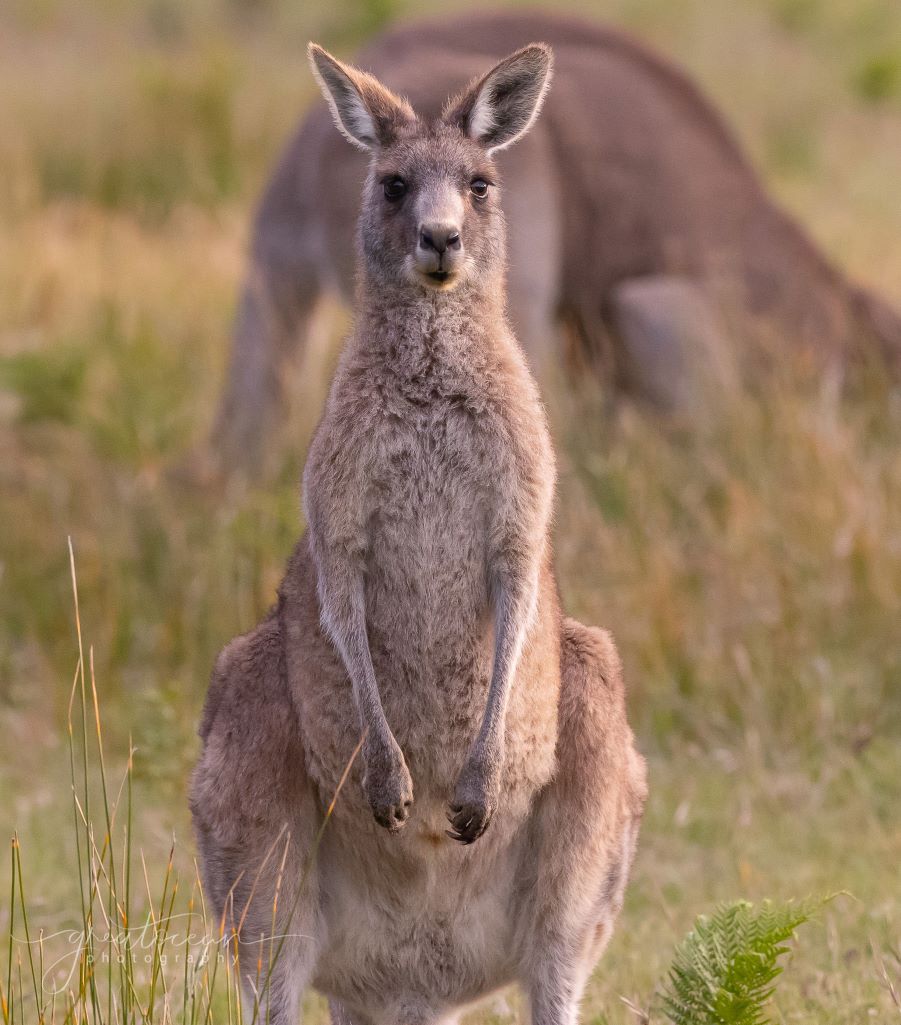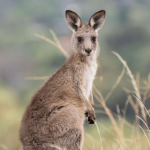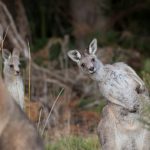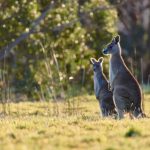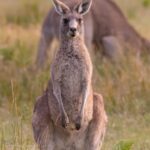Eastern Grey Kangaroo
(Macropus giganteus)
Kangaroos are the largest animals in the Otways, but what makes them really stand out is the way they move – bouncing across the horizon on their strong back legs.
DESCRIPTION
All kangaroos belong to the Macropodidae family, meaning ‘big foot’ as they have huge large hind feet that enable them to move very quickly – as much as 60km per hour – using their strong muscular tails for balance. They can also swim strongly and use their forepaws to drown predators. All kangaroos have excellent hearing and keen eyesight.
Like koalas, kangaroos are marsupials, and instead of the foetus growing internally with a placenta, after a month’s gestation, the female gives birth to a tiny, hairless embryo, around the size of a jelly bean. The newly born joey climbs from the mother’s birth canal through her fur to the pouch where it latches on to one of her teats. For at least six months the tiny joey stays safely in the pouch, then when it has grown sufficiently it will be allowed to hop out and move around to eat grass, while staying close to its mother for safety. It takes around 18 months before the joey is independent.
While females typically give birth to one joey each year, kangaroos are unique in that they are able to keep extra embryos in a dormant state known as ‘embryonic diapause’ until the first joey leaves the pouch. The mothers are able to have a juvenile joey at their feet, a younger one in the pouch and an embryo in diapause all at the same time. If conditions are harsh (say in times of drought, with little feed available) the embryo will remain dormant until times improve.
There are several species of kangaroo. The kangaroos you’ll see at Wildlife Wonders are eastern grey kangaroos. They like to live in family groups called ‘mobs’ and can be found grazing on the luscious pasture of the open grasslands or, in hot or chilly weather, sheltering in the woodlands.
Most active between dusk and dawn, kangaroos eat leaves, fern, flowers, fruits and moss. Like cattle, they regurgitate their food, chewing it twice before it passes through their stomach. They prefer to drink from open water sources, but when desperate they can dig deep holes to search for water.
Presently, eastern grey kangaroos thrive in the Otways, but as land is developed they could be in danger of losing their habitat, so must be protected – like all wildlife.
Want to see eastern grey kangaroos at Wildlife Wonders? Book here!

